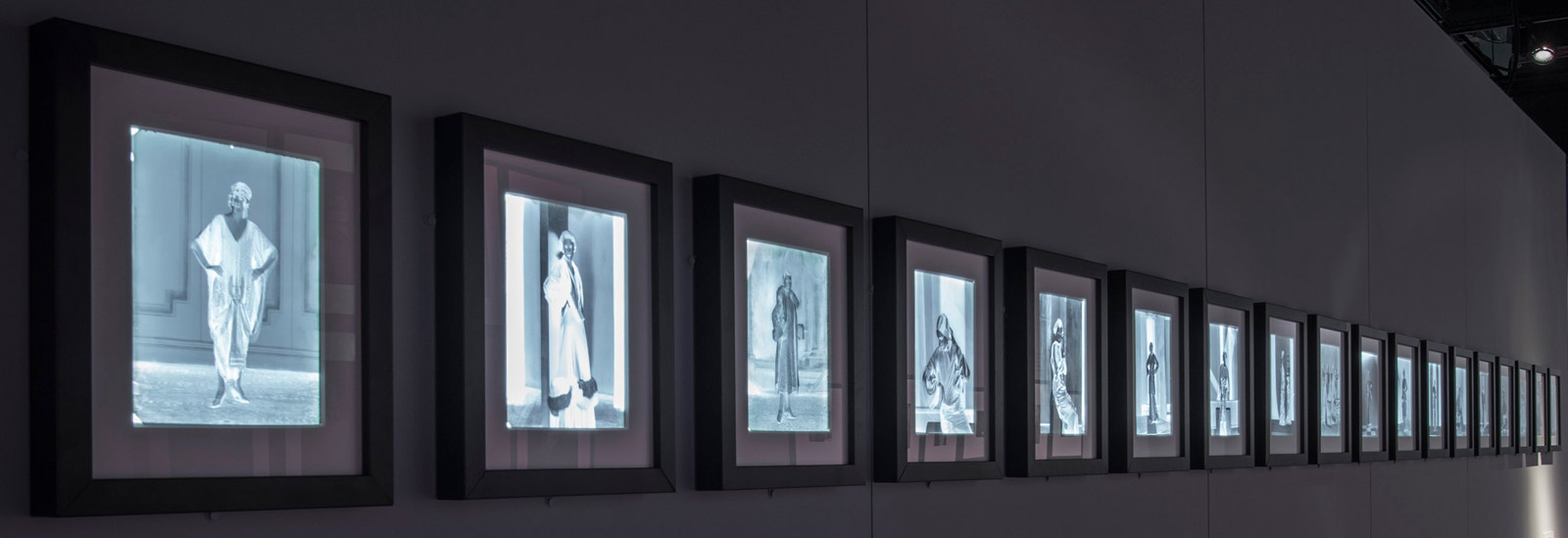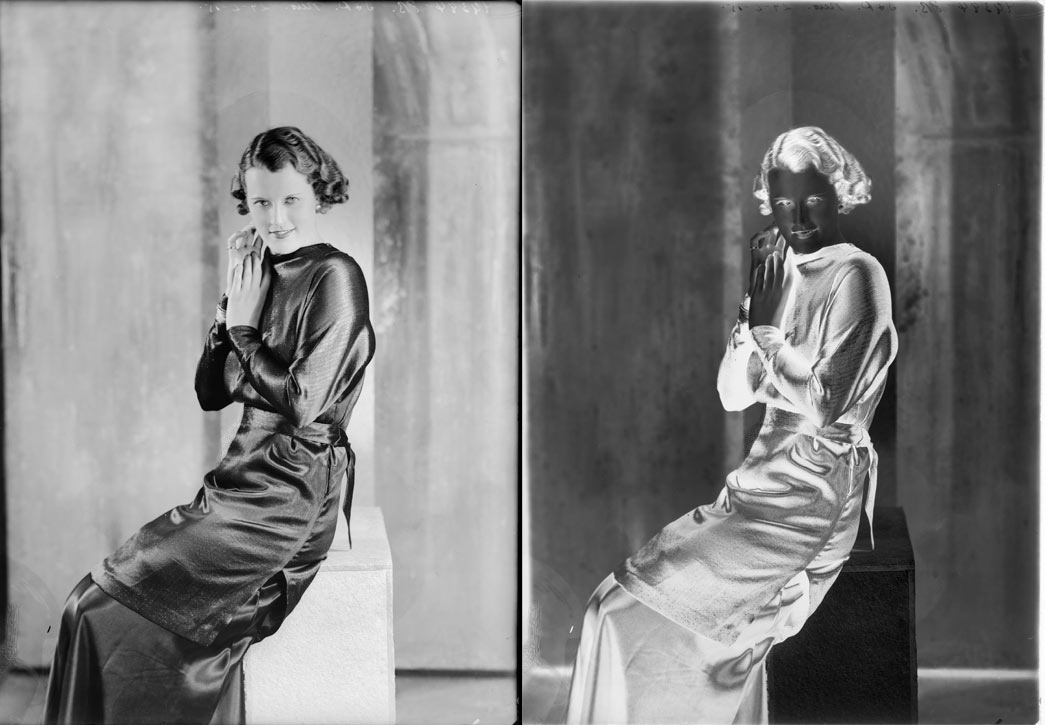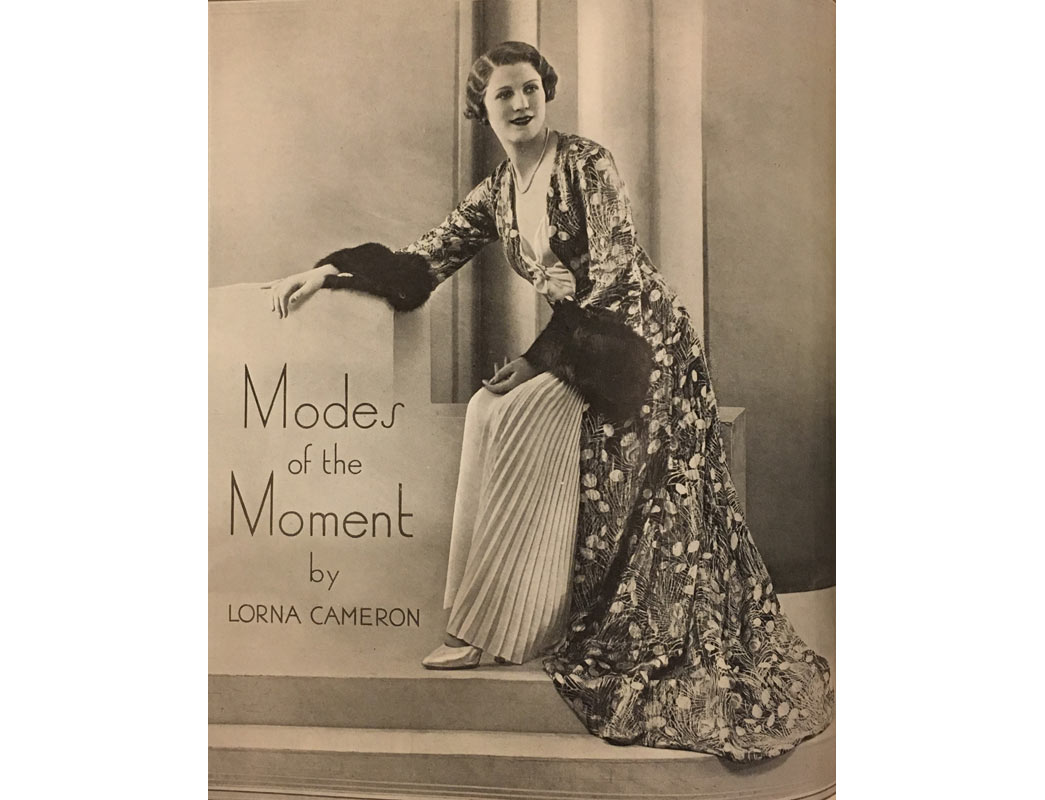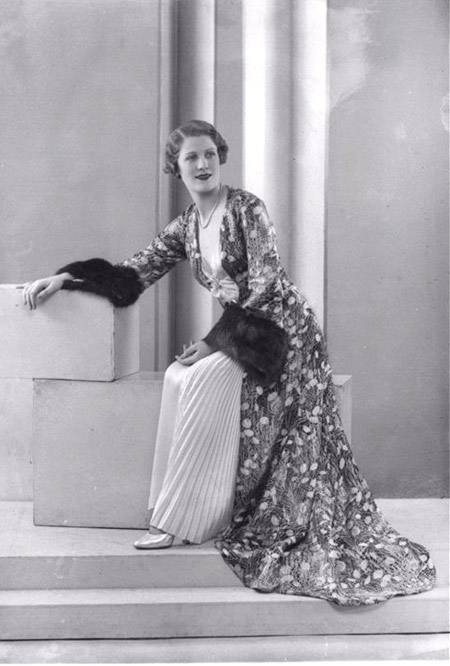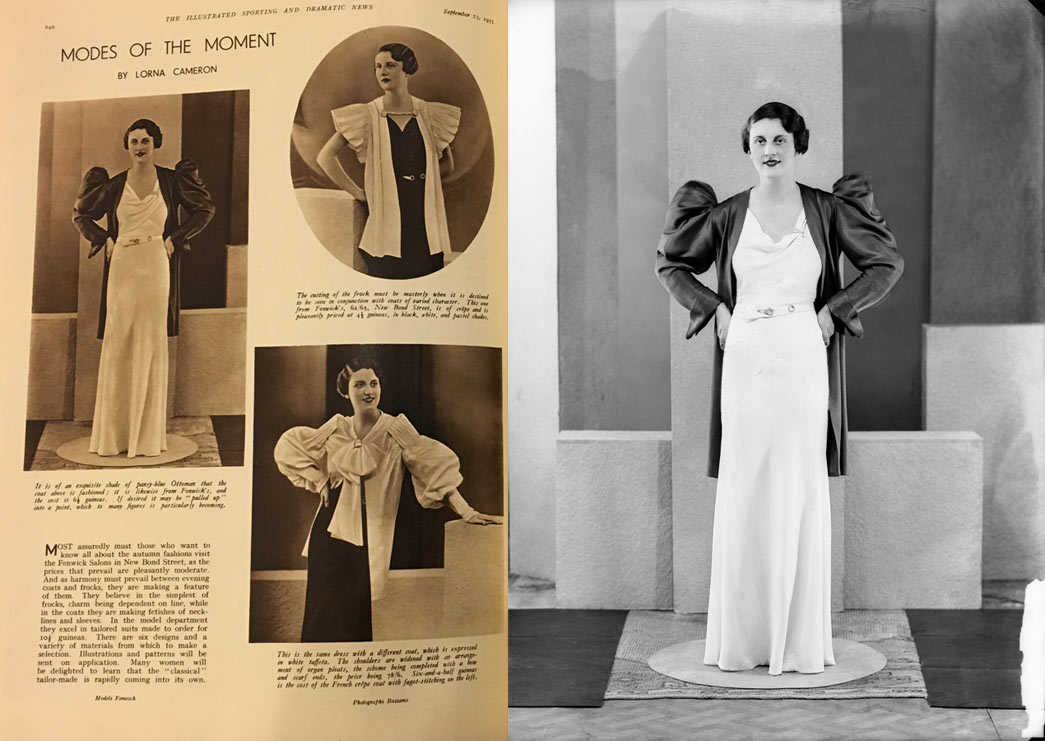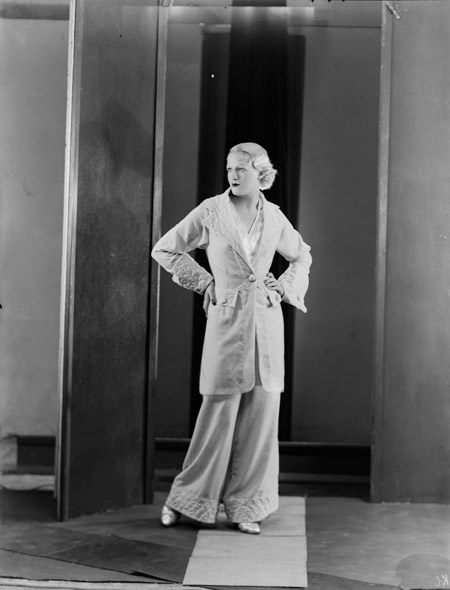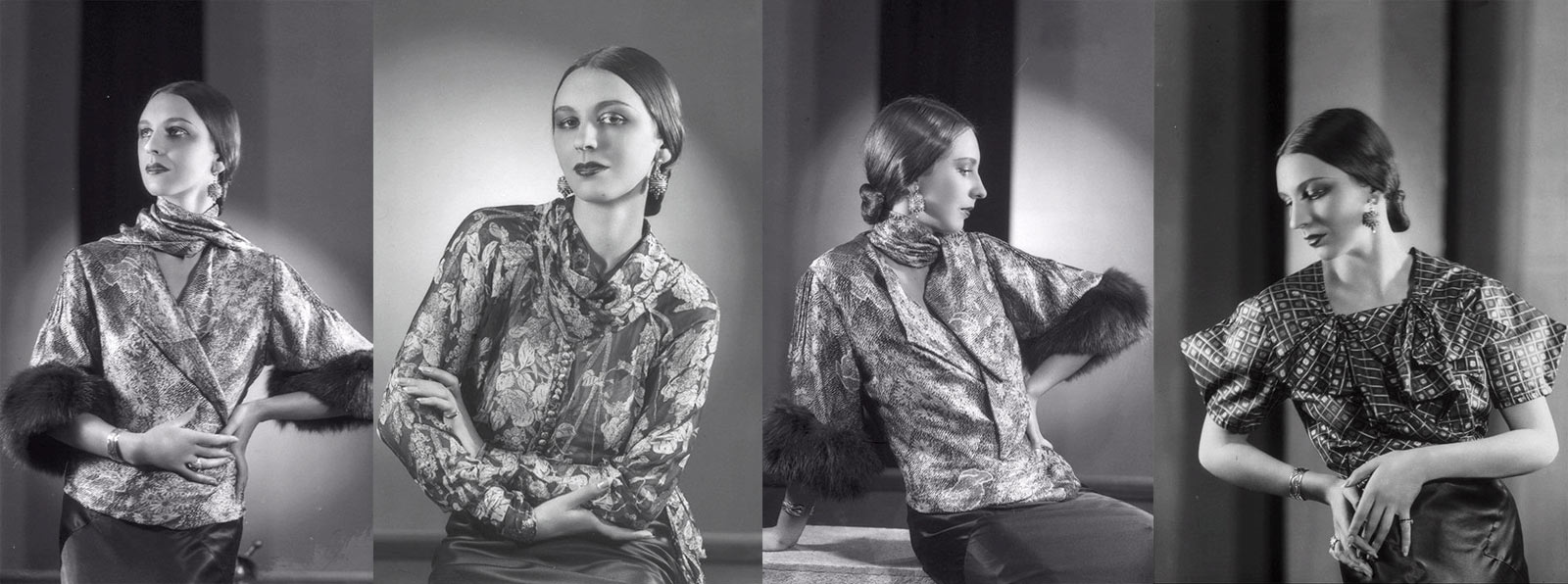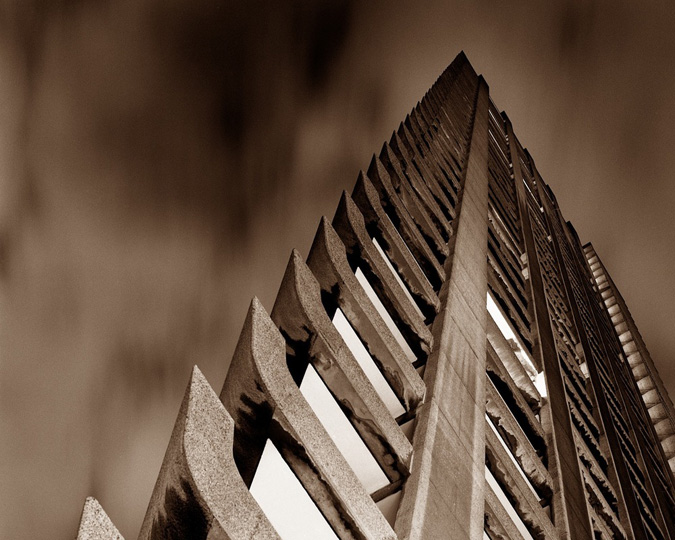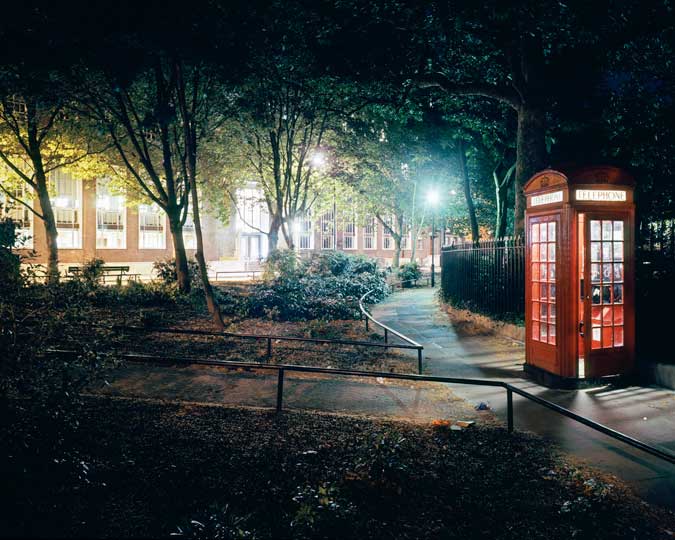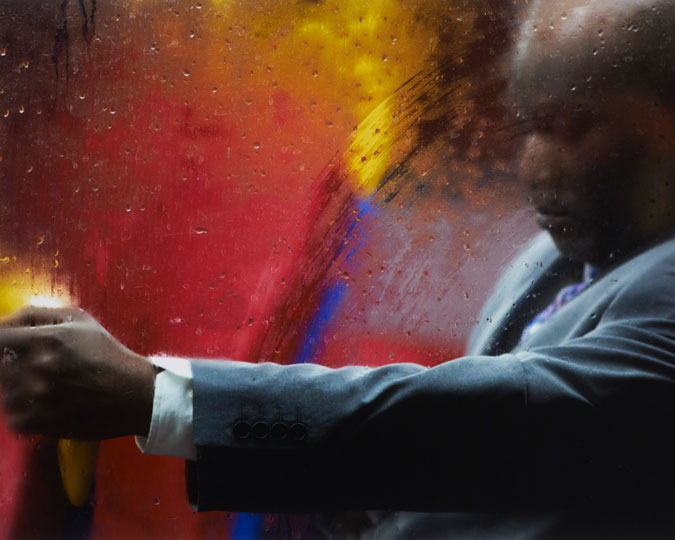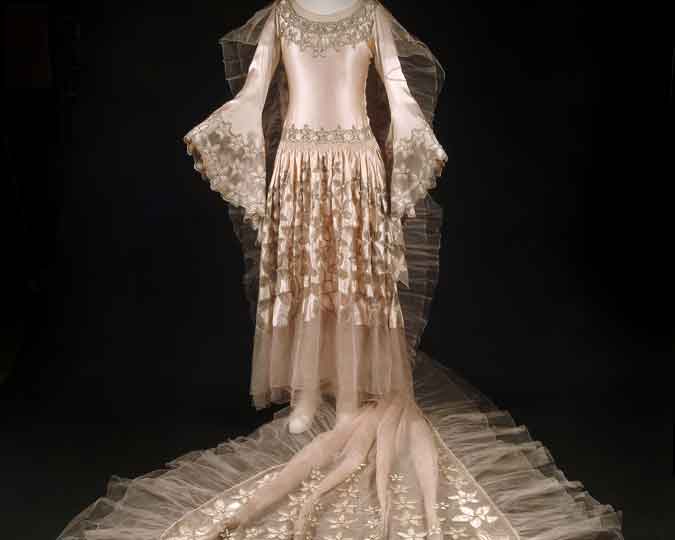Fashion curator Beatrice Behlen explores the beautiful and striking eveningwear of the 1930s, as seen through fashion photography.
The London Nights exhibition closed on 11 November 2018.
As a fashion curator, my favourite part of the London Nights exhibition was – unsurprisingly – the display of photos from the interwar period, showing models in evening wear. The images formed part of what we call the ‘Bassano Archive', more than 3,000 glass plate photographic negatives produced at the Bassano Studio between around 1912 and 1945. I love that photography curator Anna Sparham decided to display the actual glass plate negatives, rather than modern positive prints. But I am also intrigued by what the images show.
The main work of the Bassano Studio was portrait photography – that part of the archive is now kept at the National Portrait Gallery – but it also produced images for advertisements and editorials, featuring the creations of ready-to-wear manufacturers, tailors, milliners, hairdressers and other trades relating to beautifying and dressing the body.
Alexander Bassano (1829-1913) had originally set up his studio in Regent Street in 1850. By the time he retired in 1903, the studio had moved to 25 Old Bond Street, via Piccadilly and Pall Mall. It was refurbished and re-opened under the name Bassano Limited and perhaps it was the founder’s death in 1913 that allowed his successors to venture into advertising (or maybe no earlier examples of this kind of work have survived). In 1921 the studio moved again, to Dover Street, where it remained until 1974 and where the majority of the photos on display in London Nights were taken.
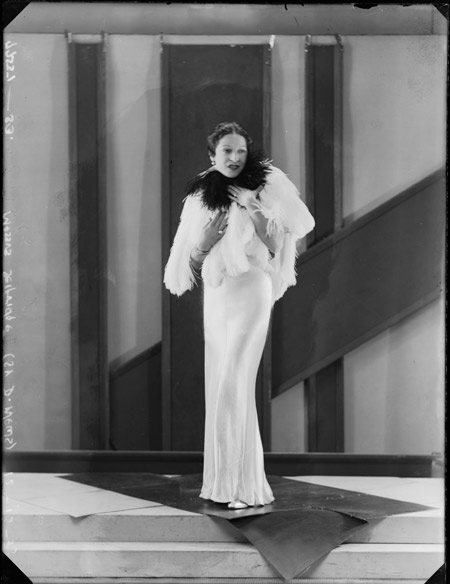
13 December 1933, Eveningwear for Selfridge & Co, shot for the Illustrated Sporting and Dramatic News
The model, wearing an ostrich-feather cape, appears to be posing on pieces of lino.
For most Bassano images we have a precise date and know the company who created the featured products. We also often have the name of the publication the photo was destined for, such as society weekly The Bystander or The Graphic, a rival of the Illustrated London News. Many of the examples in London Nights were made for the Illustrated Sporting and Dramatic News, a magazine I did not know.
As the title suggests, it contains what seems to me an odd mixture of sport reportage and theatrical news. Similar to many of the magazines of this period, its first few pages are filled with advertisements, in this case for riding breeches, weatherproofs, sport and walking shoes, hunting shirts, whips and even saddles, providing an idea of the target audience.
There cannot have been many sporting activities that were not covered by the Illustrated Sporting and Dramatic News. I found features on hunting, sailing, skating, fencing, boxing, golf, tennis, rugby, cricket, archery and angling, as well as horse and automobile races, motoring and cars in general. The stage was represented by one or more pages filled with photos of scantily-dressed theatre or film actresses, usually in swimming suits or shorts.
While some of this might sound more aimed at men, the Illustrated Sporting and Dramatic News also included a regular section called ‘Modes of the Moment’ with photographs of women’s fashions by Bassano and text by a certain Lorna Cameron. Almost all the images discussed here can be found in the exhibition.
On 29 June 1933, a model was photographed leaning somewhat awkwardly on what looks like blocks made of concrete but are more likely of painted wood. She wears a light-coloured, pleated evening gown underneath a fur-trimmed, patterned coat from Liberty department store.
The photo appeared three weeks later, in the 22 July issue, when the reader was told that the young woman’s outfit was ‘destined for an informal dinner and for the cocktail hour’ after the races. The dress or ‘slip’ was of ‘orchid mauve satin’ while the negligee, or coat was made of gold and black brocade with leaves in pastel shades.
Blocks and pieces of floor covering are geometrically arranged below and behind a model in a clinging, bias-cut gown shot on 4 September 1933. Her dark evening coat with its dramatic sleeves could be obtained from the high-end department store Fenwicks. When the photo eventually appeared in the magazine, on 23 September 1933, it was cropped quite closely, so the make-shift nature of the props was no longer apparent.
According to the caption, the coat is made ‘of an exquisite shade of pansy-blue Ottoman’, a ribbed fabric which would have helped holding the shape of the sleeves. The coat would have set you back 6 ½ guineas, a lot considering that earlier in the year a family advertised for an experienced governess with ‘fluent French, Latin, music’ who was expected to look after three children for 3 guineas a week (The Times, Classified Advertising, 10 January 1933).
A photograph of a platinum-blonde in lounging pyjamas taken on 29 September 1934 again reveals a background and floor put together from bits and pieces. It appeared in Illustrated Sporting & Dramatic News on 12 October with others showing merchandise from the department store Swan & Edgar on Piccadilly Circus. The three-piece, highwayman coat, trousers and waistcoat, is made of ‘chiffon velvet’, apparently a lightweight, soft velvet on a chiffon base, that is declared to be ‘the last word in pyjamas for wearing after the sun has set’. Sadly, the colour of the ensemble is not mentioned.
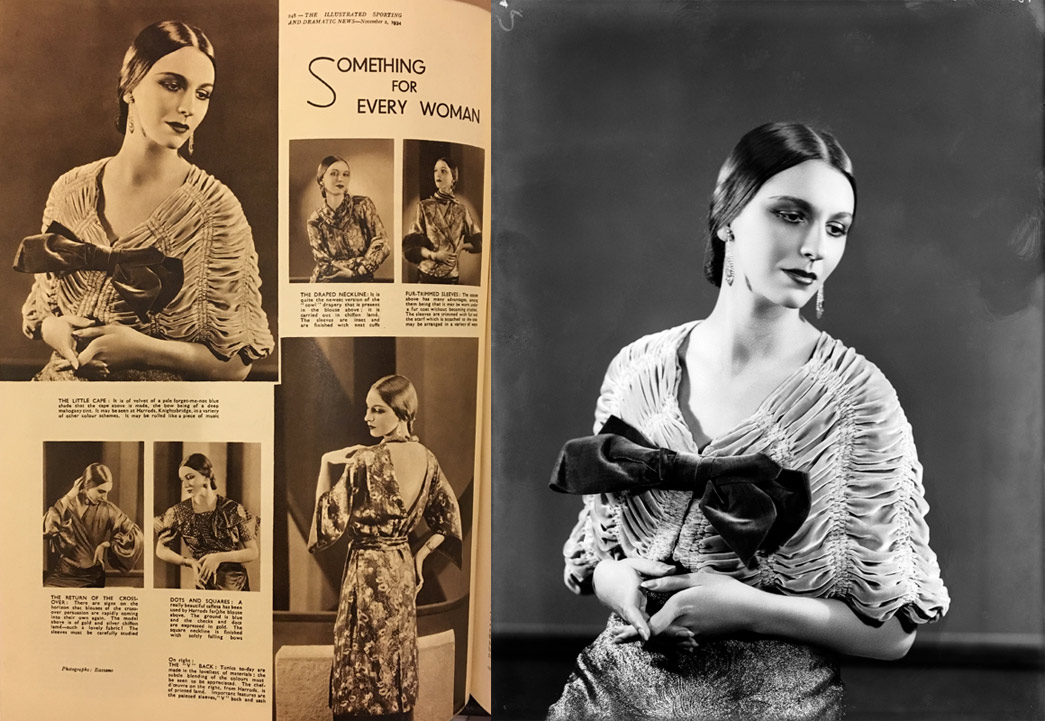
Modelling eveningwear for Harrods
Image of a woman modeling eveningwear for the retailer Harrods. Published in Illustrated Sporting & Dramatic News.
My favourite page was included in the issue of 2 November 1934. The beautiful (and beautifully made-up) model is shown in no less than six garments available from Harrods. I am not surprised which image the editor has chosen to feature more prominently, it is the most dramatic and the face draws you onto the page. The pleated cape of ‘pale forget-me-not blue’ velvet, decorated with a prominent bow ‘of a deep mahogany tint’ was also available in other colours and ‘maybe be rolled up like a piece of music’. A second photo, also shown in the exhibition, has the model in a crossover blouse of sparkling ‘gold and silver chiffon lamé’, the sleeves of which, so Lorna advises, ‘must be carefully studied’.
I wish I could spend more time looking for Bassanos in magazines and study the difference between the original photo and what ends up on the page. I expected more information about colours but I presume Lorna (who I am now convinced was actually a man) might never have seen any of the garments and only had the photos and information provided by the store. The pages seem to be what we would now call advertorials, advertisements disguised as editorial content. I wonder how this worked in practice – who selected the garments, who chose the models, who decided how they were shot? Their story is sadly missing. I would love to know who they were.
Love fashion? Subscribe to our fashion newsletter to read more stories from our collections, and find out about upcoming events and exhibitions.








